Scroll down for photo gallery
While autumn was a bit turbulent with the vestiges of Cyclone Phailin battering rice crops and a December windstorm damaging hundreds of houses and buildings across Paro and Haa valleys, winter is settling in obediently. This means that we get cold nights (-5C to -10 C) and warm sunny days (+15C to +20 C when the sun is shining). In between, barely a cloud is visible above Thimphu, with some wisps occasionally spilling over Sinchula Hingayla from Punakha valley.
Antonia and I recently took advantage of the warm sun to walk one of our usual routes from our house in Upper Motithang to Chhokhortse Goempa via BBS tower. On a whim, I took along my old Nikon D200 SLR which has been converted into an infrared (IR) camera. This means that there is a special IR filter over the sensor (available from www.lifepixel.com) which allows only infrared light to pass to the sensor, filtering out all visible light.
IR photography results in a few dramatic changes.
1) Monochrome pictures: Straight from the sensor, pictures actually look red or magenta hued. This can be corrected in camera with a custom white balance, or in any post production software like Lightroom. I use both, a white balance which gets close to pure black & white, and a small red filter correction in Lightroom to boost the contrast and make it true B&W.
2) Unexpected light and shadows: The first thing one notices when looking at IR pictures is the dramatic white of vegetation, giving the impression of snow. This is because, while leaves reflect a narrow range of green visible light, they reflect nearly all IR light, making them bright white in IR pictures. At the same time, sky and water absorb nearly all IR light, making them appear very black, resulting in great contrasting plants, skies and clouds (when there are any).
3) Challenging photography: Aside from the basic shifts in colour, a few other changes make IR photography more interesting. One is that there is much less light getting to the filter, meaning that fast lenses, higher ISOs or longer exposures are necessary. Another challenge is that the focus shifts in many lenses, especially zoom lenses with more elements. I find that my prime lenses (AF Nikkor 20mm f/2.8 and AF Nikkor 50mm f/1.4D) work perfectly on autofocus, but my superzoom (AF-S Nikkor 18-200mm f/3.5-5.6G VR DX) is a bit more challenging, requiring some trial and error.
Have a look at the pictures below and let me know what you think! (Click on any picture to expand or view as slide show.)
- Our neighbour Pema’s simple house
- The dogs leading the way
- Light and shadows
- Barbed wire and shadows at BBS
- Prayer flags in the sun
- Flowers? No, flags!
- The new Chhokhortse Goempa
- Rambo photobombing
- The upper temple at Chhorkhortse
- The new temple at Chhokhortse
- Antonia enjoying the sun
- Fancy flags
- A brand new set of funeral flags
- Blue pine
- Worm’s eye view
- Can’t see the forest for the flags
- Chorten detail
- Altar detail in a ray of sun
- metalwork on a door frame
- Door handle on the new temple


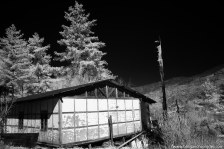


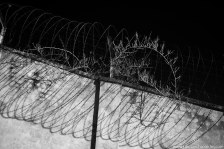
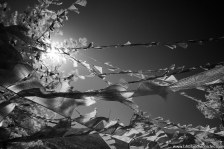
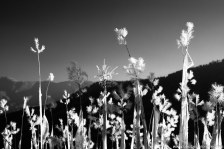
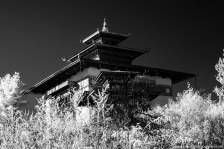




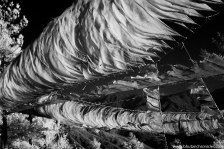


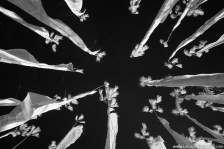

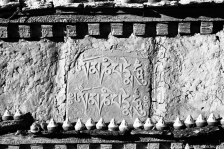


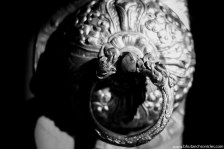
Love your B&W images, infrared images are just so magic…
Prayer flags in the sun….you can see the prayers taking flight.
Charming!
Great stuff here. It seems to convey the coolness of the winter climate.
Great stuff, Randall!!